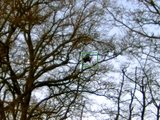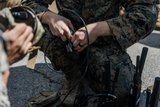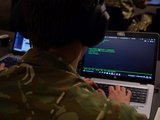L-3 KEO photonics masts for Virginia SSNs
L-3 KEO, the electro-optics business of L-3 Communications, has won a contract to develop the new version of its photonics mast for US Virginia-class submarines, as announced on 26 May.
The $48.7 million contract was awarded by the US Naval Sea Systems Command (NAVSEA) as part of the Block 4 Low Profile Photonics Mast (LPPM) programme. Under the contract, L-3 KEO will design and develop the lower-profile mast in the first year of the contract. The NAVSEA can exercise options to have L-3 KEO produce up to 29 masts over a four-year period. The contract also covers engineering services and provisioning item orders, with a maximum value of $157 million.
The non-hull-penetrating LPPM will have a sleek profile that reduces the periscope signature and makes it appear similar to existing periscopes, thereby making it less identifiable as a US navy submarine.
Steve Kantor, president, L-3 Electronic Systems, said: 'We are extremely pleased to collaborate with the US navy on the Block 4 LPPM programme, which will significantly enhance Virginia-class submarines in deployments around the globe.
'This is a great opportunity to build on our long-standing partnership with the navy by delivering sophisticated imaging technologies to a valued customer with well-defined, mission-critical requirements.'
Matthew Richi, president, L-3 KEO, said: 'We are very pleased to have been selected to provide the US navy with a photonics mast that combines the enhanced situational awareness capability it wants with the more stealthy footprint it needs to avoid detection in international waters.
'As the leading submarine imaging provider in the world, we look forward to focusing on the interoperability of our systems to explore export licensing opportunities with international navies.'
L-3 KEO plans to develop the LPPM for the NAVSEA to support new submarines and also retrofit existing ones under a modernisation programme.
More from Digital Battlespace
-
![EID to unveil new vehicle communication system at DSEI]()
EID to unveil new vehicle communication system at DSEI
The Portuguese company’s naval communications system is in service across more than a dozen countries. It has turned to its home nation for support in developing a new vehicle based C2 system.
-
![Chess Dynamics successfully demonstrates Vision4ce AI-driven tracker]()
Chess Dynamics successfully demonstrates Vision4ce AI-driven tracker
The Vision4ce Deep Embedded Feature Tracking (DEFT) technology software is designed to process video and images by blending traditional computer vision with artificial intelligence (AI) algorithms to present actionable information from complex environments.
-
![Wave Relay devices cleared for security use on commercial systems in industry trend]()
Wave Relay devices cleared for security use on commercial systems in industry trend
Persistent Systems has been cleared by National Security Agency (NSA) to transmit sensitive data on commercial networks. The devices are added to the NSA’s Commercial Solutions for Classified (CSfC) component list which also includes other companies’ products providing the same security.
-
![UK teases cyber spending boost in Strategic Defence Review ahead of “imminent” release]()
UK teases cyber spending boost in Strategic Defence Review ahead of “imminent” release
The release of the UK’s Strategic Defence Review (SDR) has been long promised as mid-year. It is possible it could be as early as 2 June although the UK Ministry of Defence (MoD) continues to play its cards close to its chest.
-
![Intelsat emphasises SATCOM resilience for SOF in contested domains (video)]()
Intelsat emphasises SATCOM resilience for SOF in contested domains (video)
Intelsat outlines how its multi-orbit SATCOM architecture is enhancing connectivity and resilience for special operations forces operating in degraded and contested environments.
-
![US Space Force’s next-generation missile warning system moves forward with $500 million in new contracts]()
US Space Force’s next-generation missile warning system moves forward with $500 million in new contracts
Next-Generation Overhead Persistent Infrared (Next-Gen OPIR) satellites are intended to provide early warning of missile launches from any location worldwide and new ground stations will result in expanded coverage of critical missile warning.
























